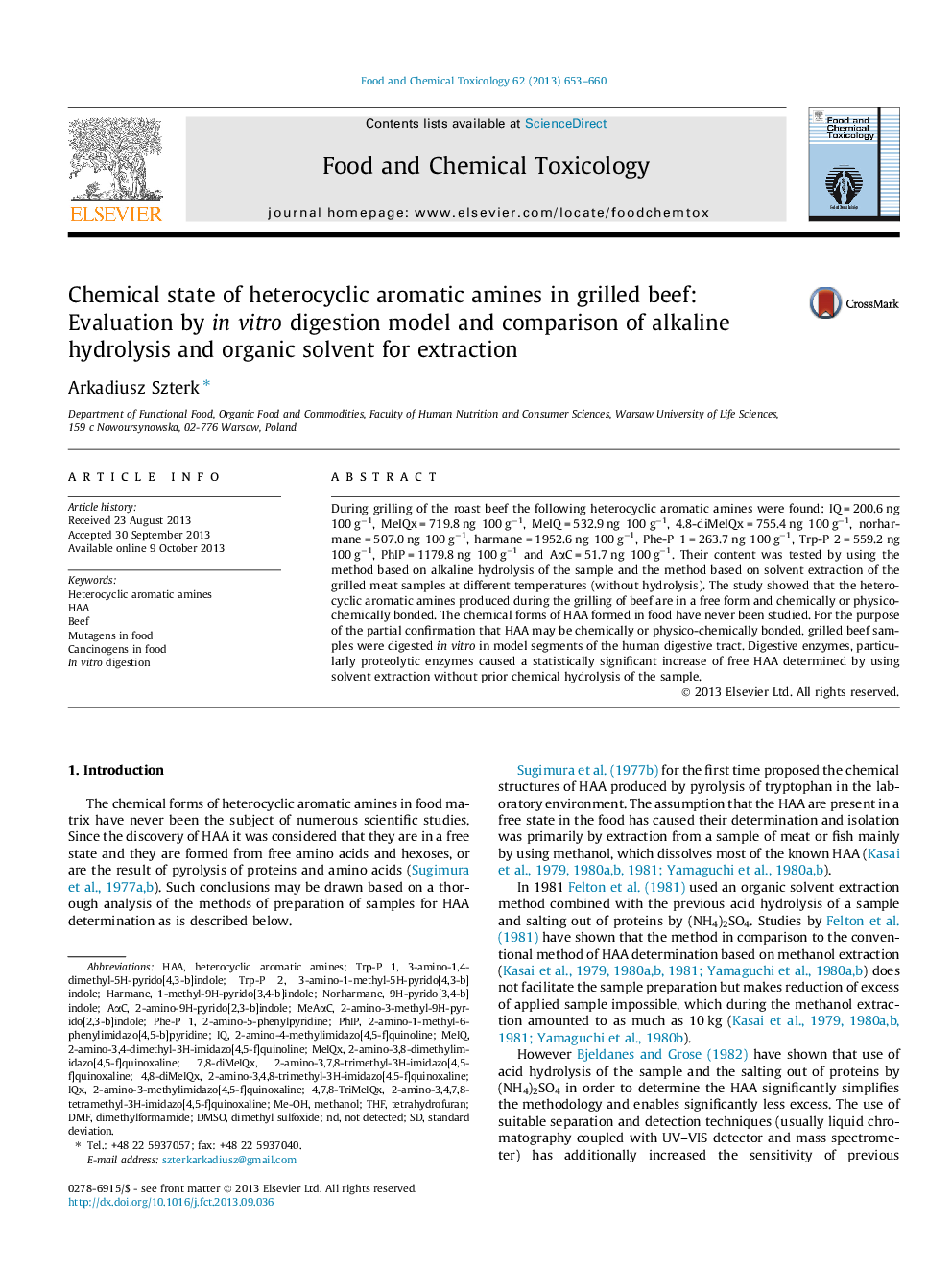| Article ID | Journal | Published Year | Pages | File Type |
|---|---|---|---|---|
| 5850439 | Food and Chemical Toxicology | 2013 | 8 Pages |
Abstract
During grilling of the roast beef the following heterocyclic aromatic amines were found: IQ = 200.6 ng 100 gâ1, MeIQx = 719.8 ng 100 gâ1, MeIQ = 532.9 ng 100 gâ1, 4.8-diMeIQx = 755.4 ng 100 gâ1, norharmane = 507.0 ng 100 gâ1, harmane = 1952.6 ng 100 gâ1, Phe-P 1 = 263.7 ng 100 gâ1, Trp-P 2 = 559.2 ng 100 gâ1, PhIP = 1179.8 ng 100 gâ1 and AαC = 51.7 ng 100 gâ1. Their content was tested by using the method based on alkaline hydrolysis of the sample and the method based on solvent extraction of the grilled meat samples at different temperatures (without hydrolysis). The study showed that the heterocyclic aromatic amines produced during the grilling of beef are in a free form and chemically or physico-chemically bonded. The chemical forms of HAA formed in food have never been studied. For the purpose of the partial confirmation that HAA may be chemically or physico-chemically bonded, grilled beef samples were digested in vitro in model segments of the human digestive tract. Digestive enzymes, particularly proteolytic enzymes caused a statistically significant increase of free HAA determined by using solvent extraction without prior chemical hydrolysis of the sample.
Keywords
AαC4,7,8-TriMeIQxMeAαC1-methyl-9H-pyrido[3,4-b]indole9H-Pyrido[3,4-b]indoleMeIQxMeIQ2-amino-3-methylimidazo[4,5-f]quinoxalineIQxDMFPhIPHAATHF2-amino-1-methyl-6-phenylimidazo[4,5-b]pyridine2-amino-3-methyl-9H-pyrido[2,3-b]indole2-amino-3,8-dimethylimidazo[4,5-f]quinoxaline2-Amino-9H-pyrido[2,3-b]indole3-amino-1-methyl-5H-pyrido[4,3-b]indole3-amino-1,4-dimethyl-5H-pyrido[4,3-b]indole4,8-diMeIQx7,8-diMeIQxDMSOHeterocyclic aromatic aminesstandard deviationTetrahydrofurannot detecteddimethylformamideDimethyl sulfoxideMethanolNorharmaneHarmaneIn vitro digestionBeef
Related Topics
Life Sciences
Agricultural and Biological Sciences
Food Science
Authors
Arkadiusz Szterk,
